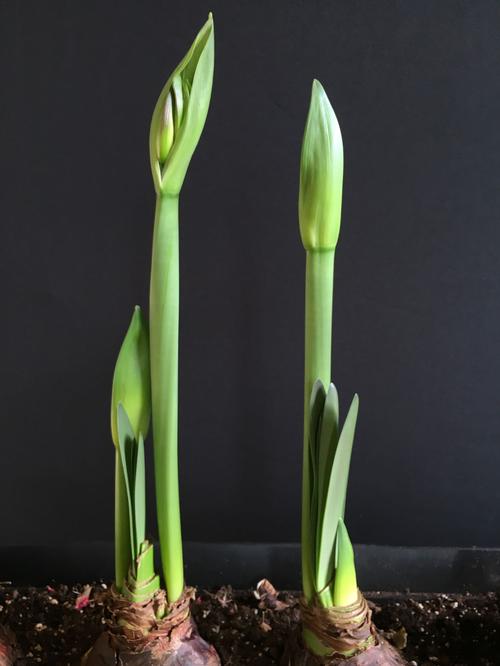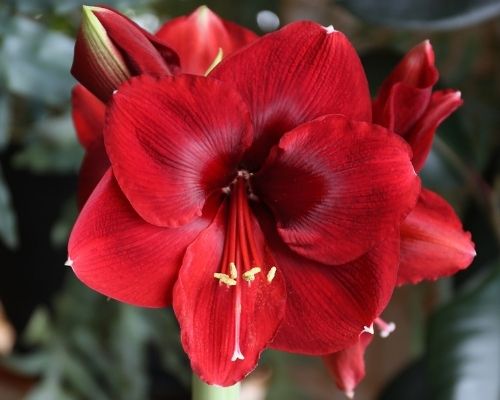How to Estimate Bloom Time for Amaryllis Bulbs
Predicting exactly when plants will come into bloom is a tricky business. Just ask anyone who has tried to coordinate a wedding with the weekend their peonies will be flowering!
Amaryllis can be equally baffling. Just looking at the bulb there's no way to know if or when it is getting ready to sprout. And, once a bulb does break dormancy, some amaryllis varieties are much slower-growing than others. Though there are no guarantees about bloom time, here are some clues that can help you plan for the best possible results.
What's the Bulb's Origin?
Amaryllis bulbs that are grown in the southern hemisphere (Brazil, Peru, South Africa), typically flower during December (assuming they are planted in late October or early November). These are known as "early" or "Christmas blooming" amaryllis. Bulbs that are grown in the northern hemisphere (usually Holland) flower between late January and early March.
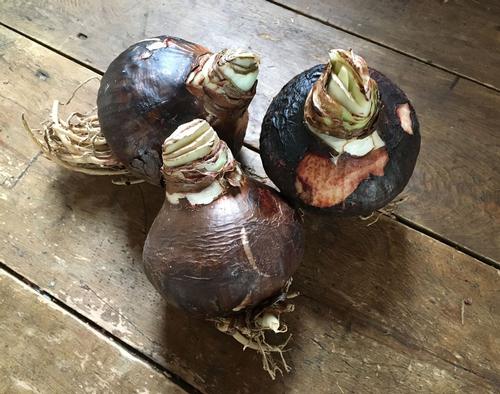
Which Amaryllis Variety are You Growing?
Like most bulbs, amaryllis go through a dormancy period that lasts between 3 and 6 months. While the bulbs are dormant, the plants finish developing their flowers, using energy that was stored during the growing season. Natural dormancy periods vary, and this is one reason some varieties of amaryllis come into bloom sooner than others.
The variety list below will give you some idea of what to expect. Be aware that some varieties of amaryllis are grown in both the northern and southern hemispheres, so you can't go only by the variety name.
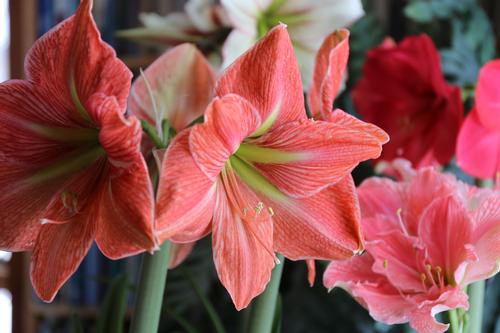
Early-blooming varieties (for the holidays): Bolero, Cape Horn, Charisma, Denver, Ice Queen, Mandela, Olaf
Early winter varieties: Minerva, Cherry Nymph, Magic Green, Magical Touch and Evergreen
Mid-winter varieties: Appleblossom, Splash, Double King, Exotica and White Nymph
Late winter varieties: Red Pearl, Red Lion, Spartacus, Nymph, Christmas Gift and Lagoon
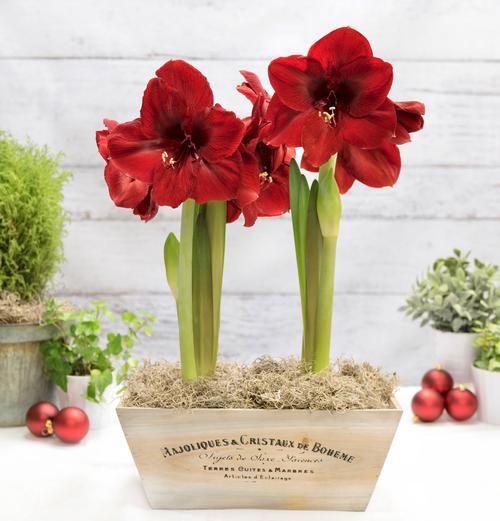
When Did You Plant the Bulb?
Another factor that impacts bloom time is when you plant the bulb. As a general rule, the sooner you put an amaryllis bulb into moist soil and give it light and warmth, the sooner it will wake up and start growing. But you'll also find that as the winter progresses, the bulbs are more eager to bloom and will come into flower more quickly.
If you purchase early blooming amaryllis and want them to be flowering for the holidays, buy the bulbs as soon as they are available and plant them before November 1st.
To stagger or delay the bloom time of northern hemisphere amaryllis, store the dormant bulbs in a cool, dry, dark place and wait to pot them up until 6 to 10 weeks before you want the flowers.
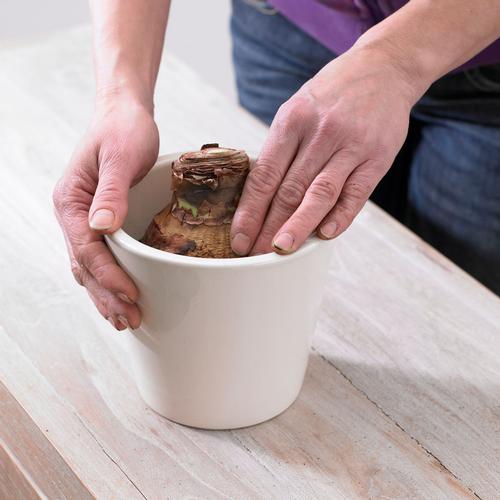
What to Expect
How will you know when your amaryllis is starting to wake up? The first sign of growth will be the tip of a bud or a leaf peeking out from the top of the bulb. If the bulb hasn’t already been potted up, do it now and put the pot in a bright room that’s relatively warm -- approximately 65-70°F. Water sparingly, which means no more than 1/4 to 1/2 cup per week. Once the bulb has sprouted and is in active growth, you can usually expect to see flowers in 3 to 4 weeks.
Amaryllis bulbs are somewhat unpredictable and will not sprout until they're good and ready. Be patient. As long as you don't overwater so the bulb stays dry and firm, it will eventually bloom.
Some amaryllis bulbs send up their flower stalks before producing any leaves. Others produce leaves first, followed by the flower stalks. Sometimes you'll get leaves and flowers at the same time. Depending on the size of the bulb, you can expect to get between one and three flower stalks. Again, these may emerge all at once, or in succession over a period of 3 to 4 weeks.
